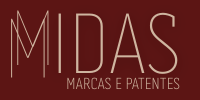Introduction
Registering a trademark is essential for businesses and entrepreneurs looking to protect their brand identity. In Brazil, the National Institute of Industrial Property (INPI – Instituto Nacional da Propriedade Industrial) is responsible for managing trademark registrations. However, one of the most common concerns among applicants is the cost of registering a trademark with INPI.
The total expense of trademark registration depends on multiple factors, including the type of applicant, the number of classes, and additional services such as oppositions or appeals. This article provides a comprehensive guide on the costs involved in trademark registration in Brazil, including application fees, renewal fees, and additional expenses.
Why Register a Trademark?
Before discussing costs, it’s important to understand why registering a trademark is a valuable investment:
- Legal Protection: Grants exclusive rights to use the brand name, logo, or slogan.
- Market Credibility: Establishes a business’s reputation and prevents brand misuse.
- Competitive Advantage: Protects against counterfeiting and unauthorized use.
- Monetization Potential: A registered trademark can be licensed, franchised, or sold.
How INPI Determines Trademark Registration Fees
The cost of trademark registration varies based on:
- Type of Applicant: INPI offers discounted fees for small businesses, individual entrepreneurs, and nonprofits.
- Number of Classes: Trademarks are registered by classification, and each additional class incurs extra costs.
- Additional Procedures: Oppositions, appeals, and renewals require additional payments.
Standard Costs of Trademark Registration
The main expenses involved in trademark registration with INPI include:
1. Application Fee
- Small Businesses, Individual Entrepreneurs, Nonprofits (MEI, Micro, Small Companies, Nonprofits):
- BRL 355.00 per class (if filed online)
- BRL 415.00 per class (if filed manually)
- Large Businesses and Corporations:
- BRL 1,415.00 per class (if filed online)
- BRL 1,660.00 per class (if filed manually)
2. Trademark Examination Fee
Included in the application fee, this covers INPI’s review process to determine whether the trademark is eligible for registration.
3. Opposition and Response Fees
- Filing an Opposition Against Another Trademark:
- BRL 355.00 (small businesses) or BRL 1,415.00 (large businesses)
- Responding to an Opposition Against Your Trademark:
- BRL 355.00 (small businesses) or BRL 1,415.00 (large businesses)
4. Appeal Fees (Reconsideration Requests)
If a trademark application is denied, an appeal can be filed:
- BRL 575.00 (small businesses, MEI, nonprofits)
- BRL 2,300.00 (large businesses)
5. Registration Fee (After Approval)
Once INPI approves the trademark, a final registration fee must be paid:
- BRL 298.00 (small businesses, MEI, nonprofits)
- BRL 745.00 (large businesses)
6. Renewal Fees (Every 10 Years)
Trademarks are valid for 10 years and require renewal:
- BRL 710.00 (small businesses, MEI, nonprofits)
- BRL 1,775.00 (large businesses)
Additional Costs in Trademark Registration
Aside from standard fees, applicants may encounter extra expenses:
1. Trademark Monitoring Services
Monitoring services help protect a trademark from infringement by alerting businesses about potential conflicts.
- Estimated cost: BRL 500 – BRL 2,000 per year (offered by private firms)
2. Legal Assistance (Trademark Attorneys)
Hiring an intellectual property lawyer can increase the chances of trademark approval by ensuring correct documentation and responding to oppositions.
- Estimated cost: BRL 2,000 – BRL 10,000 (depending on complexity)
3. Trademark Licensing or Assignment Fees
If a company decides to license or transfer a registered trademark, INPI requires payment:
- BRL 355.00 (small businesses, MEI, nonprofits)
- BRL 1,415.00 (large businesses)
Step-by-Step Guide to Registering a Trademark with INPI
Step 1: Conduct a Trademark Search
- Check INPI’s database to ensure the trademark is not already registered.
- This prevents unnecessary costs from rejected applications.
Step 2: Select the Right Classification
- Trademarks are registered under specific classes following the Nice Classification system.
- Each additional class requires a separate application fee.
Step 3: Submit the Application
- File online via INPI’s e-INPI system.
- Pay the applicable application fee based on business type.
Step 4: Wait for Publication in the Official Gazette
- INPI publishes the application in the Revista da Propriedade Industrial (RPI).
- Third parties have 60 days to file an opposition.
Step 5: Respond to Oppositions (If Any)
- If a company opposes the trademark, the applicant must file a defense.
- This may involve additional costs, especially if legal assistance is required.
Step 6: INPI Examination and Decision
- If no opposition is filed, INPI evaluates the application.
- The process takes 12-24 months.
Step 7: Pay the Registration Fee and Receive the Certificate
- Upon approval, the final registration fee must be paid.
- INPI then issues the Trademark Registration Certificate.
Step 8: Renew the Trademark Every 10 Years
- Trademark protection lasts for 10 years and must be renewed to maintain exclusivity.
Common Mistakes That Increase Costs
- Skipping a Trademark Search: Applying for a trademark already in use leads to rejection.
- Choosing the Wrong Classification: Filing under the wrong class requires a new application.
- Missing Deadlines: Late payments result in extra fees.
- Not Responding to Oppositions: Failing to defend against oppositions can result in losing the trademark.
- Ignoring Renewal Dates: If a trademark is not renewed, it becomes available for registration by others.
Is It Worth Registering a Trademark Despite the Costs?
The benefits of trademark registration outweigh the costs:
- Legal exclusivity prevents competitors from using a similar name.
- Brand recognition increases consumer trust.
- Intellectual property value allows licensing and franchising opportunities.
Conclusion
The cost of registering a trademark with INPI varies based on business size, classification, and additional services. While the process involves several fees, trademark protection is a long-term investment that ensures brand security, legal exclusivity, and business growth. By understanding the costs and avoiding common mistakes, businesses can successfully navigate the trademark registration process without unnecessary expenses.

